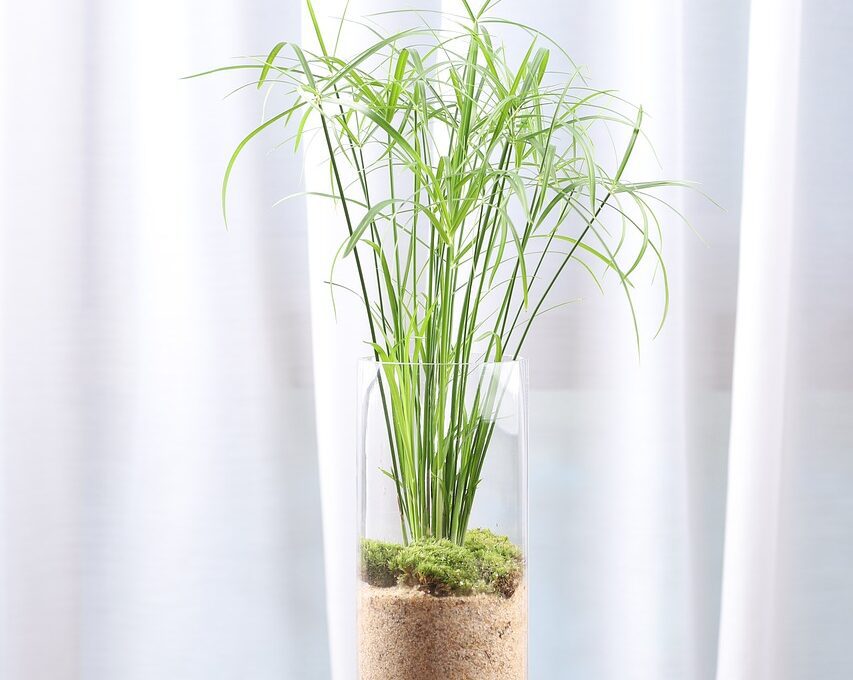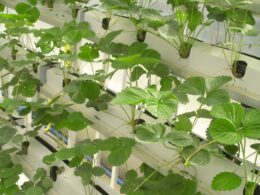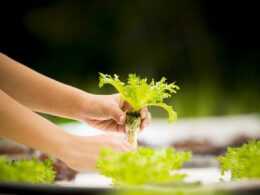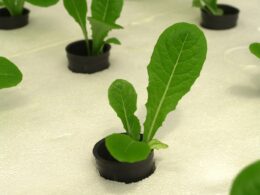Are you considering hydroponics as a means of growing your own plants? While it may seem like a modern and innovative solution, there are several reasons why you might want to think twice before investing in a hydroponic system.
First and foremost, the cost of setting up and maintaining such a system can be steep, requiring a significant financial investment that may not be feasible for everyone.
But the drawbacks of hydroponics don’t end there. With a limited crop diversity and a heavy dependence on technology, you could be putting yourself at risk of crop failure and financial loss. And let’s not forget the environmental concerns associated with hydroponics, which can have a negative impact on the planet.
If you’re looking for alternatives to hydroponics, there are several other methods of growing plants that may be more suitable for your needs and budget. Read on to learn more.
Cost of Setting up and Maintaining a Hydroponic System
Setting up and maintaining a hydroponic system can be expensive, but the investment can pay off in the long run. However, before you decide to dive into hydroponics, it’s important to consider its financial feasibility.
You need to calculate your budget for the initial setup, including the cost of materials such as containers, pumps, and grow lights. You also need to factor in the cost of water, nutrients, and electricity for the ongoing maintenance of the system. All of these expenses can add up quickly and may not be sustainable for everyone.
Long term sustainability is another important factor to consider when it comes to hydroponics. While it may seem like a great idea to grow plants indoors without soil, it’s important to remember that hydroponics is not a natural process. You need to create an artificial environment that mimics the conditions of soil in order to grow healthy plants.
This means that you need to constantly monitor and adjust the pH and nutrient levels of the water. If you’re not careful, the system can easily become imbalanced, leading to stunted growth or even plant death.
In conclusion, while hydroponics can be a great way to grow plants, it’s important to consider the financial feasibility and long term sustainability of the system. If you have the budget and resources to set up and maintain a hydroponic system, it can be a worthwhile investment. However, if you’re not willing or able to commit the time and money needed to keep the system running smoothly, it may not be the best option for you.
Limited Crop Diversity
You’ll miss out on the vast array of delicious and colorful fruits and vegetables available in nature when relying solely on hydroponics for your crops. Hydroponic disadvantages include crop variety limitations, which means that you won’t be able to grow certain crops using this system.
While hydroponics is great for growing leafy greens and herbs, it may not be the best option if you want to grow a diverse range of crops. Another issue with hydroponics is nutrient imbalances. While hydroponic systems are designed to provide plants with all the nutrients they need, it’s not always easy to achieve the right balance of nutrients.
If the nutrient solution is not properly balanced, it can lead to plant growth problems, such as stunted growth or nutrient deficiencies. This can be especially frustrating if you’re relying on hydroponics to provide a steady supply of fresh produce for your family or business. In summary, while hydroponics may be a great way to grow certain crops, it’s not without its limitations.
If you’re looking to grow a diverse range of fruits and vegetables, you may want to consider traditional farming methods. Additionally, nutrient imbalances can be a problem in hydroponics, which can lead to plant growth issues. It’s important to carefully consider the pros and cons of hydroponics before making a decision about whether it’s the right choice for your farming needs.
Dependence on Technology
You might find yourself feeling uneasy about relying solely on technology for your crops, as any technical malfunction could potentially jeopardize your entire harvest. Hydroponic systems require a constant supply of electricity, water, and nutrients to maintain optimal plant growth. If any one of these elements fails, it could result in substantial crop loss, especially in large-scale operations.
Potential drawbacks of such dependence on technology include increased vulnerability to cyberattacks, power outages, and equipment failure. Moreover, ethical implications arise when we consider the impact of hydroponics on traditional farming communities. By promoting technological solutions to agriculture, hydroponics undermines the livelihoods of small-scale farmers who rely on natural resources and traditional farming methods.
Hydroponic systems require a significant financial investment and technical expertise, which may not be accessible or affordable for some farmers. This could result in the further marginalization of already vulnerable communities, exacerbating social inequality.
In conclusion, while hydroponics offers several benefits such as higher yields and efficient use of resources, it also raises concerns about dependence on technology and its impact on traditional farming communities. While it may be a viable solution for certain crops and environments, it is important to consider the potential drawbacks and ethical implications before embracing it as a panacea for global food security. As a conscientious consumer, it’s crucial to support sustainable and equitable farming practices that prioritize the well-being of both producers and consumers.
Do Plants Drown in Hydroponics If Not Used Properly?
Plants thriving in hydroponics can drown if not properly managed. Without the right balance of nutrients, oxygen, and water, excessive moisture can suffocate the roots, leading to plant death. Monitoring and adjusting the hydroponic system regularly is essential to ensure optimal conditions for plant growth and prevent drowning.
Environmental Concerns
It’s important to address the environmental impact of relying solely on technology for our food production. Hydroponics may seem like a modern and sustainable solution, but it still has its environmental concerns. Here are some bullet points to consider:
-
Effects on wildlife: Hydroponic systems require large amounts of energy to operate, contributing to the carbon footprint. This affects the surrounding wildlife, disrupting their natural habitats and migration patterns. Additionally, hydroponic systems can lead to water contamination, harming aquatic life.
-
Use of pesticides: Hydroponics rely heavily on pesticides to prevent pests and diseases from damaging crops. This can lead to the overuse of pesticides, which not only harms the environment but can also affect human health when consumed.
-
Soil depletion: Hydroponics do not use soil, which means they do not contribute to soil health or fertility. This leads to soil depletion, which can impact the environment in the long run.
While hydroponics may offer benefits in terms of space efficiency, year-round production, and reduced water usage, the environmental concerns cannot be ignored. It’s important to consider the impact on wildlife, the use of pesticides, and soil depletion when deciding whether or not to use hydroponics as a means of food production.
As consumers, we have the power to choose sustainable and environmentally friendly food production methods.
Alternatives to Hydroponics
If you’re looking for sustainable food production methods that don’t involve the environmental concerns of hydroponics, soil-based farming is a great option. With soil-based farming, you can grow your crops using natural methods that don’t require any special equipment or high-tech systems. You can use composted soil to grow your crops, which will help you to maintain healthy soil and nutrient-rich plants.
Another alternative to hydroponics is community supported agriculture. This is a model where farmers sell their produce directly to consumers, rather than going through a middleman like a grocery store. This way, you can support local farmers and get fresh, locally grown produce without the need for high-tech growing systems. You can even visit the farm where your food is grown and see for yourself how it’s produced.
In conclusion, if you’re looking for sustainable food production methods that don’t involve the environmental concerns of hydroponics, there are plenty of alternatives to explore. Soil-based farming and community supported agriculture are just two examples of ways you can produce healthy, sustainable food without the need for high-tech growing systems. So, why not give these methods a try and see what benefits they can offer?
Frequently Asked Questions
Can hydroponic systems be used for growing fruits and vegetables?
If you’re looking to grow fruits and vegetables using hydroponic systems, you might be wondering whether indoor or outdoor growing is better. The truth is, both have their advantages and disadvantages.
Indoor hydroponic setups allow for greater control over environmental factors like temperature, humidity, and lighting, but can be more expensive to set up and maintain. Outdoor systems, on the other hand, rely on natural sunlight and can be more cost-effective, but are subject to weather conditions and pests.
As for the cost-effectiveness of hydroponic systems, it’s a bit of a myth. While they can ultimately save money on water and fertilizer, the initial investment can be steep. However, if you’re committed to sustainable agriculture and have the resources to invest in a hydroponic setup, it can be a rewarding and potentially profitable endeavor.
Is it possible to use organic nutrients in hydroponics?
Organic nutrients can certainly be used in hydroponics, but it’s important to note that not all hydroponic systems are eligible for organic certification.
Additionally, nutrient absorption can be a challenge in hydroponics, as the roots of plants may not have access to the same diversity of nutrients as they would in soil.
However, with careful management and a focus on providing a balanced nutrient solution, hydroponic growers can produce high-quality, organic produce that is both safe and sustainable.
If you’re considering using organic nutrients in hydroponics, be sure to do your research and choose a system that is compatible with organic practices.
What type of pests and diseases are common in hydroponic systems?
Pests and diseases can be a common problem in hydroponic systems, but there are preventive measures you can take to avoid them. One key step is to regularly check and maintain the cleanliness of your system, as well as keeping a close eye on any signs of infestation. Effective treatments can include using natural predators or introducing beneficial microorganisms to your system.
It’s important to act quickly if you do notice any issues, as pests and diseases can quickly spread and harm your plants. With proper care and attention, you can successfully manage these challenges and enjoy a healthy, thriving hydroponic garden.
Is it difficult to adjust pH and nutrient levels in hydroponics?
Adjusting pH and nutrient levels in hydroponics can be a bit challenging, especially for beginners. However, the potential benefits of hydroponics over traditional soil based methods are numerous.
With hydroponics, you can grow more plants in less space, have better control over the growing environment, use less water, and avoid soil-borne diseases and pests.
The key to successfully managing pH and nutrient levels in hydroponics is to monitor them regularly and make adjustments as needed. While there may be a learning curve in the beginning, with practice and experience, you can become a master at hydroponic gardening and enjoy the benefits it has to offer.
Are there any notable success stories of hydroponic farming for large-scale production?
Hydroponic farming has been successful in certain large-scale production scenarios. However, it’s important to note the limitations of the technology.
While hydroponics can efficiently use water and nutrients, the initial investment costs can be high and ongoing maintenance can be labor-intensive. Additionally, the economic feasibility of hydroponic farming depends on the market demand for the crops being grown and the cost of resources.
Despite these limitations, there are notable success stories of hydroponic farming for certain crops, such as lettuce and herbs, in areas with limited land availability or water resources.
Ultimately, the decision to pursue hydroponic farming should be based on a thorough analysis of the costs and benefits specific to the intended crop and location.
Conclusion
So, why not use hydroponics? Well, there are a few reasons to consider.
Firstly, the cost of setting up and maintaining a hydroponic system can be quite high. You’ll need to invest in equipment, nutrients, and electricity to keep your plants growing.
Additionally, the limited crop diversity in hydroponics means that you may not be able to grow all the fruits and vegetables you want.
Another reason to think twice about hydroponics is the dependence on technology. If your system fails or you don’t have access to electricity, your plants could suffer. Plus, there are environmental concerns to consider, such as the use of plastic and the potential for nutrient runoff.
But don’t worry, there are alternatives to hydroponics. You could try traditional soil-based gardening, or even explore aquaponics, which combines hydroponics with fish farming.
Ultimately, the choice is yours. Just be sure to weigh the pros and cons before diving into hydroponics.









